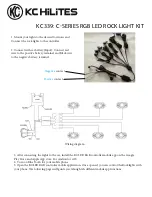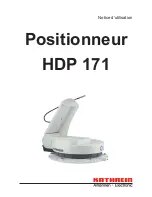
www.balluff.com
17
5.12.
Zero adjustment
Zero adjustment allows users to compensate for mechanical offsets of a horizontally mounted 2-axis device or set
a customised 0° position of a vertically mounted 1-axis sensor. The measured inclination value at the 0° position
will be stored in the device as a permanent offset, which is used to calculate the actual inclination output of the
device. The zero offset value can be read from Object 6013
h
, 6023
h
Offset inclination value.
Zero adjustment can be done in 2 ways, and can be repeated at any time.
1.
Via Object 300F
h
Zero adjustment
The zero adjustment can be done for each axis separately or for all axes at the same time. Status
information of the result is available from object 300F
h
. The offset value will be stored permanently in the
device
without “save” to object 1010
h.
2.
Via Object 6012
h
, 6022
h
Pre-set inclination value
To set the output of X/Y axis to 0°, write 0000
h
to object 6012
h
/ 6022
h
at your desired 0° position. The
offset will be stored in Object 6013
h
, 6023
h
Offset inclination value. Those parameters must be saved to
the device
(→ Object 1010
h
Store parameters.)
1-axis ±180° sensors can be zero adjusted over the full range, the position of the male connector is at
customer discretion.
2-axis ±30°/±90° sensors can only be zero adjusted in a horizontal position within an offset limit of ±5°.
After you load factory default settings, the sensor will be restored with the factory zero offset. This means
the pre-set inclination value will be restored to 00
h
, object 6013
h
and 6023
h
will be rewritten to a factory
default value and you need to zero the sensor again.
5.13.
EDS & DCF
The “Electronic Data Sheet” (EDS file) is a file format that describes the communication behaviour and the object
dictionary entries of a device. In fact, it is a template. This allows tools to handle the device properly. The file
format is described in CiA306 V1.3.0.
The EDS file contains all possible settings and functions for the device by describing the CAN object dictionary for
the device to be set by CAN commands.
The EDS file does not contain a customer specific configuration description (the values of the object dictionary,
such as the chosen baud rate, TPDO1 event time, Node ID, etc.). For this purpose, the customer can generate a
DCF file (Device Configuration File) with all customer specific settings in the same format as the EDS file. The
DCF file is in fact an emulation of the EDS file.
After loading the DCF file into the device, the settings can be stored permanently into the EEPROM (Object 1010
h
Store parameters).
The EDS files are available at the product page at www.balluff.com under
“downloads”.
















































